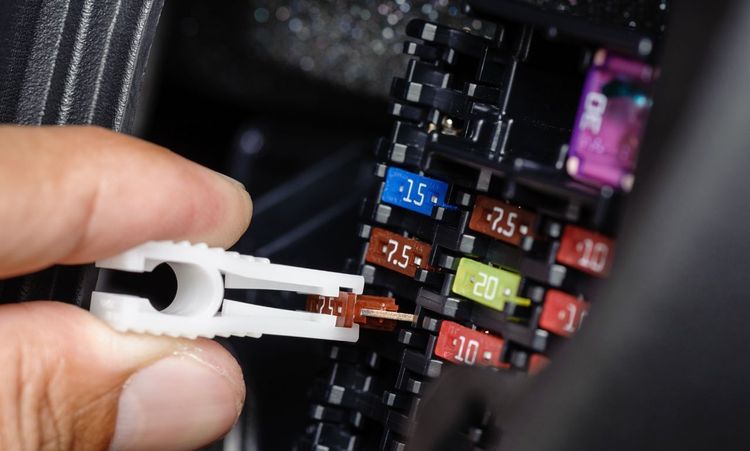Need to insure a car you don't own? You're not alone. Many people face this exact situation every day. Maybe you're borrowing a family member's car long-term. Perhaps you regularly drive your partner's vehicle. Whatever your reason, securing proper insurance matters. Getting coverage for a vehicle registered to someone else creates unique challenges. Insurance companies typically want the policyholder and car owner to match. This requirement protects them from fraud and ensures clear responsibility. Yet solutions exist for those needing to insure vehicles they don't legally own. Various options can provide the coverage you need while satisfying insurance requirements. Let's explore how to navigate this common but tricky insurance scenario.
Can You Insure a Car You Don't Own?
Yes, you can insure a car that's not in your name - but it's complicated. Insurance companies hesitate to offer standard policies in these situations. Their caution stems from legitimate concerns about potential fraud risks. Most insurers prefer that the car's registration and insurance policy match names. This alignment creates clear responsibility and simplifies claims processing. Without matching names, questions arise about who truly controls the vehicle. Insurance providers worry about "insurable interest" when names don't match. This term means you must show financial stake in protecting the car from damage. Without ownership, proving this interest becomes your first hurdle. State regulations further complicate matters by setting different rules for non-owner situations. Some states strictly require the policyholder to appear on the vehicle's title. Others offer more flexibility with proper documentation and explanation. The good news? Alternative coverage options exist despite these obstacles. Finding the right solution depends on your specific situation and relationship to the vehicle owner. Several paths forward exist, depending on your circumstances.
How to Insure a Car You Don't Own
Get Added to the Owner's Policy
The simplest solution often involves joining the existing insurance policy. Ask the registered owner to add you as a driver on their coverage. This approach works best for family members or partners sharing living space. Insurance companies readily accept this arrangement for household members. The owner maintains the policy while you gain driving privileges and protection. Both parties benefit from this straightforward solution. Adding your name typically costs less than obtaining separate coverage. The owner might see a small premium increase based on your driving history. Bad records naturally lead to higher costs, while clean ones minimize financial impact. This option provides comprehensive protection while avoiding complicated paperwork. You'll enjoy the same coverage levels as the policyholder without bureaucratic hassles. The insurance card will still show the owner's name, though. Remember that claims will affect the owner's insurance history, not yours. Any accidents under this arrangement impact their future rates. This shared risk represents an important consideration when choosing this path.
Transfer the Car Title to Your Name
Taking ownership solves insurance problems permanently. Consider transferring the vehicle title if you'll drive the car long-term. This solution eliminates complications by aligning registration and insurance names. The transfer process varies by state but generally requires paperwork and fees. You'll need the current owner's signature on title transfer documents. Most states charge sales tax calculated on the vehicle's value. Becoming the legal owner means gaining complete control over insurance choices. You can select coverage types, limits, and deductibles based on your needs. Freedom to comparison shop among insurers often leads to better rates. Ownership also creates clear responsibility for the vehicle's condition and usage. You alone bear liability for accidents, maintenance, and compliance with local laws. This clarity benefits everyone involved in the arrangement. Title transfer makes particular sense when purchasing a car from someone gradually. Making payments while already driving the vehicle presents insurance challenges. Getting your name on the title resolves these issues immediately.
Demonstrate an Insurable Interest
Insurance companies want proof of your financial stake in the vehicle. Showing "insurable interest" can convince reluctant insurers to provide coverage. This approach works in situations where title transfer isn't feasible. Supporting documentation strengthens your case significantly. Gather maintenance receipts showing your financial contributions to the car. Proof that you make car payments on the owner's loan helps tremendously. Written agreements between you and the owner carry substantial weight. Draft a document outlining your usage rights and financial responsibilities. Having the agreement notarized adds credibility with insurance providers. Explaining your living situation sometimes helps establish insurable interest. Regular access to the vehicle combined with financial contribution often satisfies insurers. Be prepared to answer detailed questions about your arrangement. Different companies set different standards for acceptable proof. Shop around if your first attempt meets resistance. Some insurers show more flexibility than others regarding non-standard ownership situations.
Get a Non-Owner Car Insurance Policy
Check Your Policy for Rental Coverage
Your existing auto policy might already cover non-owned vehicles. Review your current insurance documents before pursuing new coverage. Many policies include provisions for occasionally driven cars. Most comprehensive policies extend limited coverage to borrowed or rented vehicles. This protection typically applies to temporary situations rather than regular use. The coverage limits usually match your primary vehicle's policy. Call your insurance agent to clarify exactly what's covered in these situations. Ask specific questions about coverage duration and limitations for non-owned cars. Understanding these details prevents unpleasant surprises later. Protection for rental vehicles often comes standard with full-coverage auto policies. This feature proves valuable when traveling or while your primary car undergoes repairs. Separate rental insurance becomes unnecessary with this built-in protection. Your credit card might offer additional coverage when renting vehicles. This supplementary protection works alongside your auto policy for better overall coverage. Check your cardholder agreement for specific terms and limitations.
Purchase a Non-Owner Car Insurance Policy
Non-owner policies provide liability coverage when driving others' vehicles. This specialized insurance covers you rather than any specific car. It follows you regardless of which vehicle you operate. This policy type primarily offers liability protection for injuries or property damage. It covers medical bills and repair costs for others in accidents you cause. Your financial assets gain protection from potentially devastating lawsuits. Non-owner insurance typically costs less than standard auto policies. The absence of comprehensive and collision coverage explains the lower premiums. You're not insuring against physical damage to the vehicle itself. Several major insurers offer these specialized policies nationwide. State Farm, Progressive, and GEICO rank among the top providers. Comparison shopping helps find the best rates for your specific situation. Remember that non-owner policies include important limitations. They won't cover repairs to the vehicle you're driving after an accident. The car owner's insurance must handle physical damage claims.
Conclusion
Insuring a car registered to someone else presents challenges but remains entirely possible. The key lies in understanding your options and choosing the approach that fits your circumstances. Solutions exist for nearly every situation. The simplest path usually involves joining the owner's existing policy. When that's not viable, demonstrating insurable interest or purchasing non-owner coverage provides alternatives. Title transfer represents the most permanent solution for long-term arrangements. Whatever approach you choose, maintaining continuous coverage protects everyone involved. Driving without proper insurance creates financial risks and potential legal problems. Take time to secure appropriate protection before getting behind the wheel. Remember that insurance requirements vary by state and individual circumstances. Consulting with insurance agents about your specific situation yields the best results. Their expertise can guide you toward the optimal solution for your needs. With the right coverage in place, you can confidently drive a vehicle regardless of whose name appears on the title. Peace of mind comes from knowing you're properly protected on the road. That security makes the effort of finding appropriate insurance worthwhile.




